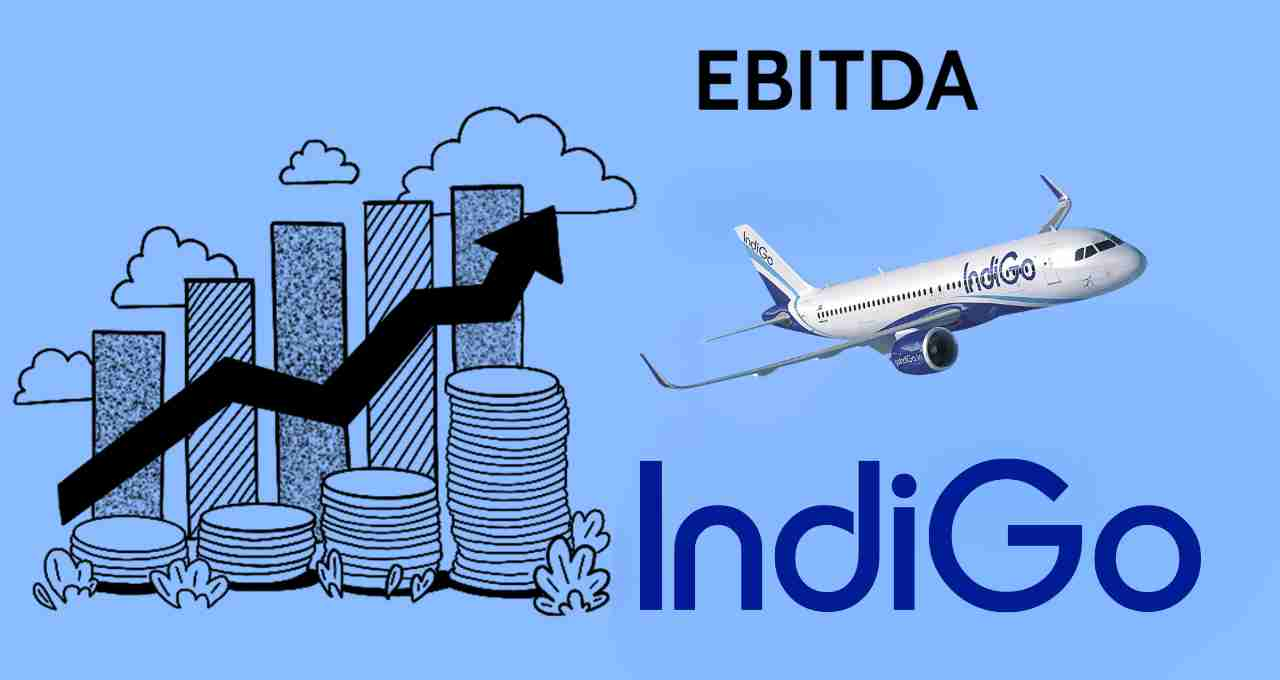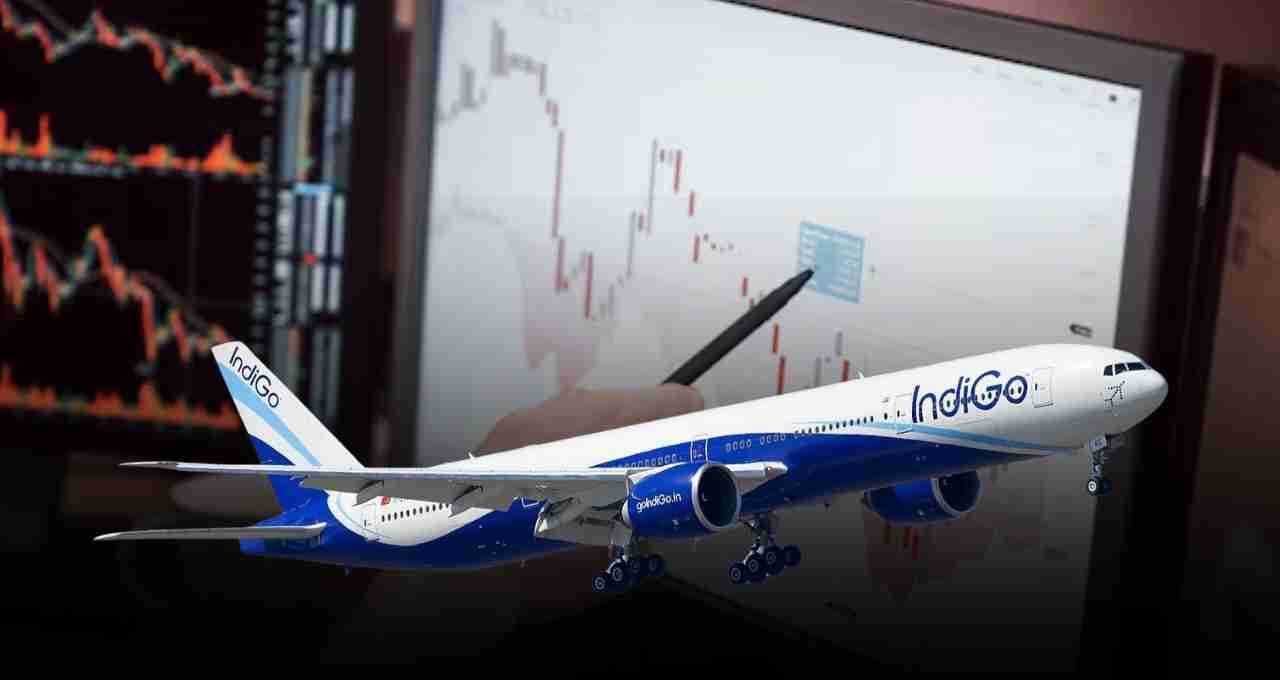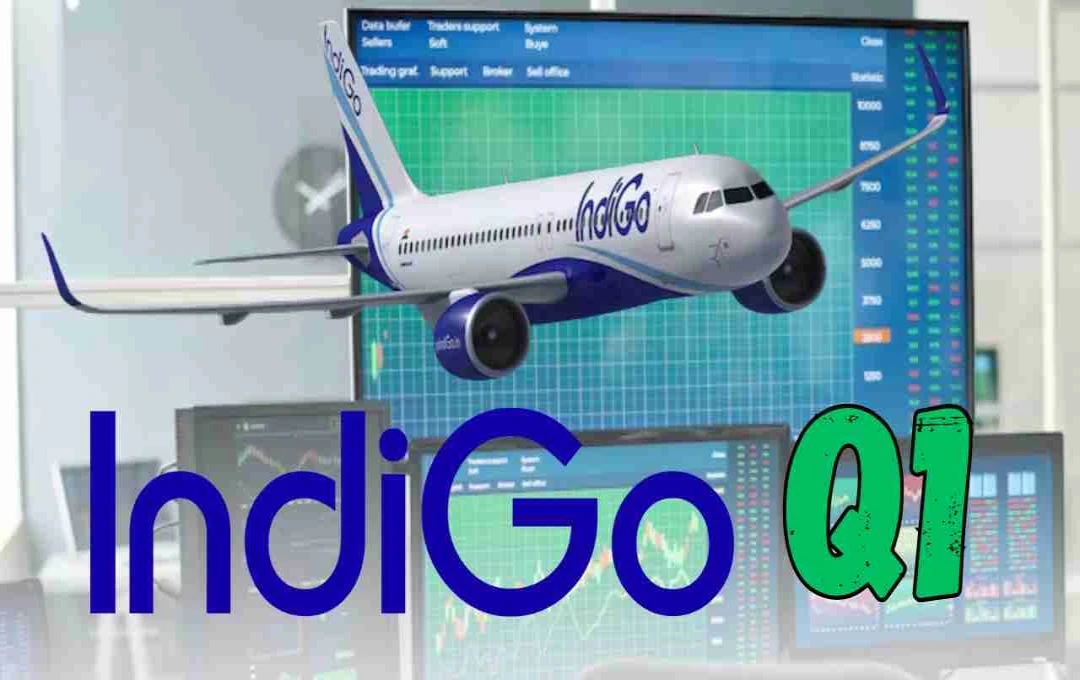InterGlobe Aviation Ltd., which operates India's largest airline, IndiGo, has released its financial results for the first quarter, Q1. The company's net profit for this quarter stood at ₹2176 crore, a 20% year-on-year decrease. In the same quarter last year, the company had reported a profit of ₹2728 crore.
The company's performance was weaker than expected, as the CNBC TV18 poll had predicted a profit of ₹2484 crore.
Only Marginal Increase in Revenue
The company's total revenue for this quarter was ₹20496 crore, a 4.7% increase compared to ₹19571 crore in the previous year.
While this increase offers some relief, the market had anticipated revenue of ₹21150 crore. Thus, the revenue figure also fell short of expectations.
Margin Decline, Operational Front Under Pressure
During the quarter, IndiGo's operating margin decreased from 26.4% to 25.5%. This indicates that the burden of expenses on the company's earnings has increased, and there has been a slight decline in operational efficiency.
According to CNBC TV18, a margin of 25.7% was expected on this front, but the actual figure was even lower.
EBITDA Increased but Below Expectations

IndiGo's EBITDA (Earnings Before Interest, Tax, Depreciation, and Amortization) increased from ₹5158 crore to ₹5226 crore, but analysts had anticipated an EBITDA of ₹5455 crore.
This implies that while there was a slight improvement in the company's operational performance, it also failed to meet expectations.
Stock Showed Weakness Even Before the Results
IndiGo's quarterly results were released after market close, but the stock had already shown weakness beforehand. InterGlobe Aviation's share closed on the BSE at ₹5721, a 0.6% decrease.
During the trading session, it had fallen to ₹5701. Notably, the company's share had reached a new annual high of ₹6019 earlier in the same month.
This suggests that investors were already anticipating some weakness in the results and took a cautious approach.
Focus on Reasons for Weakness
According to experts, the weakness in IndiGo's results could be due to several reasons. While jet fuel prices have not remained consistently stable, the returns from international flights have also not met expectations.
The company is continuously expanding its network, which includes adding new aircraft, routes, and international flights. This has led to an increase in expenses, but revenue growth has not kept pace.
Company's Expansion and Future Plans
IndiGo is currently rapidly expanding its route network and fleet. The company has recently announced several international routes and has also begun taking delivery of new aircraft.
This impacts the company's expenses, particularly in the form of maintenance, staffing, and other operating costs.
However, there has been an increase in the number of passengers, and the company's grip on domestic routes remains b. Nevertheless, margin pressure and increasing competition continue to pose challenges at the operational level.
Weaker-than-Expected Performance Surprised

Analysts had expected the company to surpass its previous year's record, but this prediction did not fully materialize.
The company's performance surprised the market on all four fronts: profit, revenue, EBITDA, and margin. This is why the stock had already registered a decline, and investors will be closely watching IndiGo's strategy and forward guidance in the coming sessions.
Market Eyes Next Quarter
Now, all eyes are on IndiGo's performance in the next quarter, Q2. The challenge for the company is to get the profit momentum back on track, while maintaining operational margins will also be a major test.
In addition, competition in the airline industry is constantly increasing. IndiGo may face stiff competition from new companies entering premium routes.
IndiGo's Current Position
IndiGo is the largest domestic airline in the country and holds a market share of approximately 60%. The company's services extend to almost all major cities in the country, and it is rapidly expanding internationally.
However, this quarter's figures show that simply increasing the number of passengers or revenue is not enough; operational efficiency and cost control are also essential.













